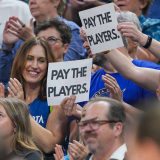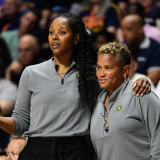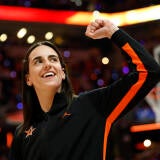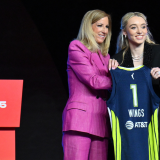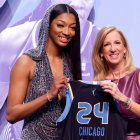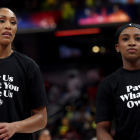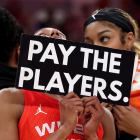2025 WNBA free agency, explained: Key dates, types of free agents, core players
Teams can begin talking to players on Jan. 21, though no deals can be signed until Feb. 1
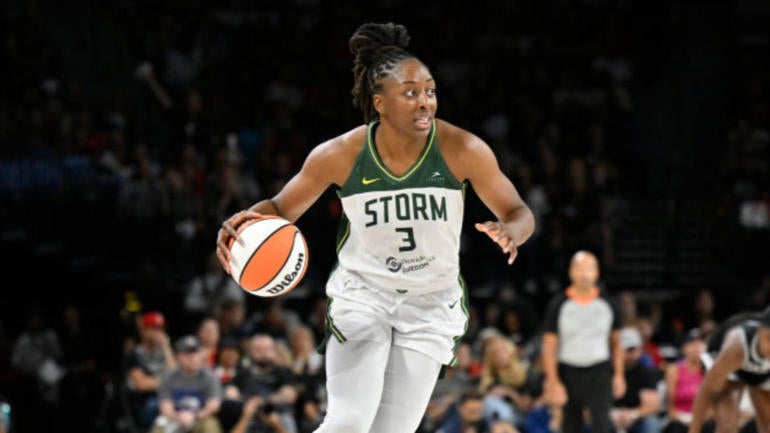
It's almost time for another round of WNBA free agency, which, after being essentially irrelevant for much of the league's early history, is now one of the most important parts of the calendar. A number of big names are hitting the market this year, including former MVPs Breanna Stewart and Nneka Ogwumike, as well multi-time All-Stars Alyssa Thomas, Kelsey Plum and Satou Sabally.
Ahead of all the action, which gets started in full on Jan. 21, here's a look at everything you need to know about this year's free agency period. For a full tracker of every signing, go here.
When does free agency start?
From Jan. 11-20, teams can make qualifying offers and "Core player" designations. After that period is over, free agency begins in full. Teams can begin negotiating with free agents on Jan. 21, but players cannot sign contracts or offer sheets until Feb. 1.
Those rules will always be skirted to some extent, but teams caught breaking them will be punished under the league's tampering rules. Most recently, the Seattle Storm were fined in 2022 for jumping the gun on legendary point guard Sue Bird's re-signing.
How does WNBA free agency work?
WNBA free agency largely operates just like the NBA. There is a moratorium period where teams can speak to players but not officially sign anything, and free agents are grouped into different classifications that dictate how both they and teams can operate.
The two main groups are unrestricted free agents, who can speak to and sign with any team they want, and restricted free agents, who can speak to and sign with any team they want, but can have that offer matched by their prior team.
The WNBA also has a reserved category, which is for players who hit free agency with fewer than three years of service. Often, these are veterans who entered the league later in their careers, but they can also be younger players who, for whatever reason, were not on a typical rookie-scale contract. The prior team has exclusive negotiating rights with said players, provided that they make a qualifying offer.
Furthermore, in rare instances, players' contracts can expire while they are suspended. When this happens, players are technically found to be "withholding service," according to the CBA, and are listed as "suspended -- contract expired." In practice, these players are treated much like reserved players, though the prior team does not have to extend a qualifying offer.
What is the core designation?
The "core designation" is most analogous to the NFL's franchise tag. If a team uses the core designation on a player, they gain exclusive negotiating rights with them, even if that player was set to be an unrestricted free agent. Teams must be shrewd with this machination, however, as there are limits on its use.
On an organizational level, each team is only allowed to designate one "core" player at a time. If said player then signs a contract with that team, they will be considered their lone designated core player for the entire length of that contract, or until they are traded or the contract is terminated. Speaking of trades, teams are allowed to trade for another team's core player even if they already have their own core player on the roster, though those situations arise rarely.
On a player level, the limit for how many seasons a player can play under a core designation was lowered to two in 2022. Thus, any player who has spent two or more seasons under a core player contract can no longer be cored. Here is a list of 2025 free agents ineligible to cored:
- DeWanna Bonner, Connecticut Sun
- Tina Charles, Atlanta Dream
- Brittney Griner, Phoenix Mercury
- Natasha Howard, Dallas Wings
- Brionna Jones, Connecticut Sun
- Nneka Ogwumike, Seattle Storm
When a team makes a core player designation, it comes with a core qualifying offer of a one-year, fully guaranteed supermax contract. Said player can decide to play out the season on that one-year deal, but it's important to note they are not required to do so. The team and the player can negotiate a deal at different terms or work together on a sign-and-trade.
How much can players make?
Player salaries are determined by a number of factors, with draft position and service time being particularly important. Here is a look at the most common types of contracts that will be signed this offseason.
2025 rookie scale contracts
| Picks | 2025 | 2026 | 2027 | 2028 (Team option) |
|---|---|---|---|---|
1-4 | $78,831 | $80,408 | $88,449 | $100,510 |
5-8 | $75,643 | $77,156 | $84,871 | $96,445 |
9-12 | $72,455 | $73,905 | $81,297 | $92,383 |
Second round | $69,267 | $70,653 | $77,720 | $88,317 |
Third round | $66,079 | $67,401 | $70,773 | $80,883 |
Undrafted | $66,079 | $67,401 | -- | -- |
2025 minimum base salaries
| Service time | Dollar amount |
|---|---|
0-2 seasons | $66,079 |
3+ seasons | $78,831 |
2025 maximum base salaries
| Type | Dollar amount |
|---|---|
Regular max | $214,466 |
Supermax | $249,244 |
How will the new CBA talks affect this year's free agency?
The Women's National Basketball Players Association announced on Oct. 21 that it had voted to opt out of the current collective bargaining agreement at the end of the 2025 season. Already, the WNBA and the WNBPA have started talks on a new CBA in the hopes of avoiding a work stoppage.
"We are ready to lead transformational change -- change that goes beyond women's sports and sets a precedent for something greater," WNBPA president Nneka Ogwumike said in October. "Opting out isn't just about bigger paychecks -- it's about claiming our rightful share of the business we've built, improving working conditions, and securing a future where the success we create benefits today's players and the generations to come. We're not just asking for a CBA that reflects our value; we're demanding it, because we've earned it."
A new CBA will almost certainly not be in place by the time free agency starts, so there's no telling exactly how much salaries will rise or what other benefits the players may win. It's clear, though, that things are going to be much better for the players starting with the 2026 season.
As a result, it makes sense for players to line up their contracts in order to be free agents in 2026. Not including those on rookie scale contracts, Kalani Brown and Lexie Brown are the only players with guaranteed money beyond 2025. Few, if any, will join them this offseason. Most free agents this winter, even those looking at potential max contracts, will stick to one-year deals in order to return to free agency next year.
That leads to a number of interesting possibilities. Would a player take less money for one year to join a contender in an attempt to win a title? On the flip side, would a team with cap space overpay someone for one year? There could be some unexpected deals this year.



